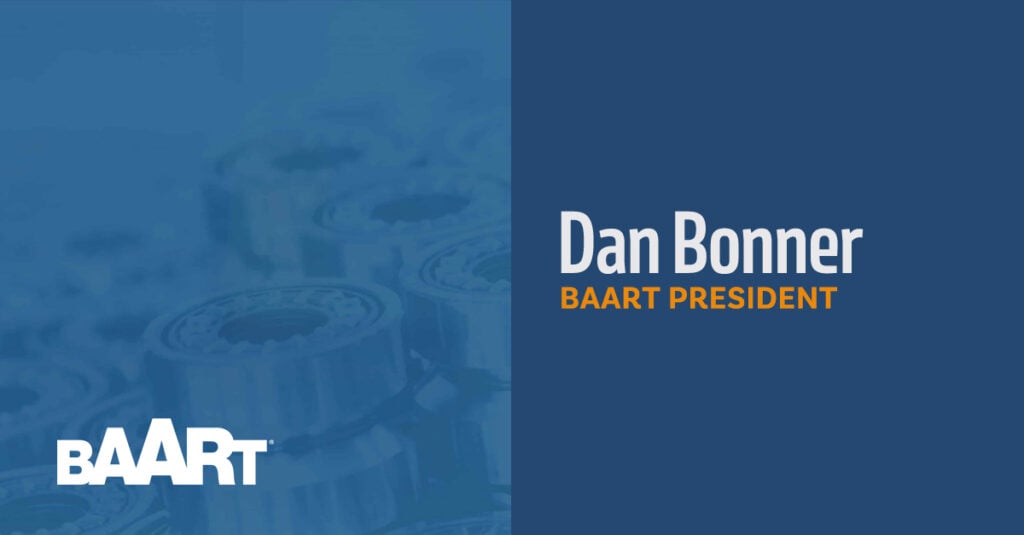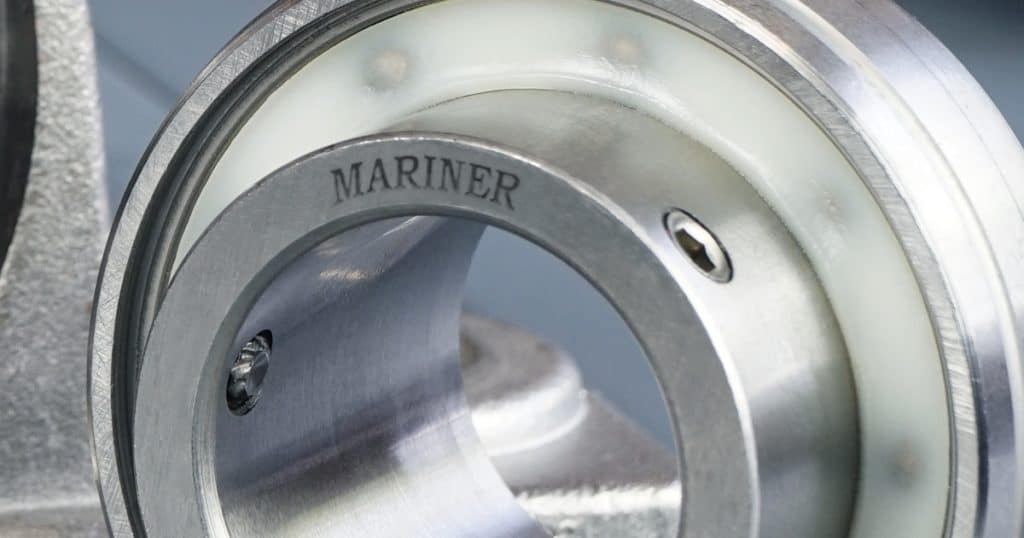Lubricate a Mounted Bearing: A How-to Guide

Proper lubrication is essential for the use of any mounted bearing. Oil within bearing grease provides a thin layer between the rolling element and the bearing rings. Without this layer of oil, pillow blocks and flange blocks won’t see a fraction of their expected life. When it’s time to lubricate a mounted bearing, a quality process is essential.
This layer of oil, which can be thinner than one ten-thousandth of an inch, prevents metal to metal contact. Without this protection, the rolling elements and inner/outer races would rapidly wear, causing a bearing failure. Grease also diffuses increasing temperatures during operation, protecting your bearings from the destructive effects of heat. If grease levels are consistently low, you’re guaranteed to experience excessive wear.
This damage will inevitably become so pronounced you’ll have to replace the bearing insert. Let’s take the easier road and figure out how to keep your mounted bearings well-lubricated and at peak efficiency.
Check the manual
When you purchase a mounted bearing, your first step should be to determine what lubricant the manufacturer chose to use. Finding a compatible grease will eliminate incompatibility issues down the line. Nearly all sealed mounted bearings come pre-lubricated, but eventually, you’re going to need to know how to replenish the grease. The manual will provide details on fill level, recommended lubrication, and maintenance schedule details.

Some catalog examples for different types of ball bearings.
Filling your bearing with more grease than is recommended can do more harm than good. Each bearing application is different, so it’s important to check the manufacturer’s recommendations. You want your lubrication to be maintained at the prescribed levels.
It’s also important to note that relubricating a bearing may temporarily cause it to get hotter. This can be concerning – especially since one of the purposes of lubrication is to decrease the temperature and friction of your parts. Rest assured, this condition is normal and temporary.
Preparing the bearing for relubrication
You’ve checked the manual. You know how much lubrication you need, how often you need it, and what kind to use for optimal performance. You’re good to go. Mostly. There are some necessary preparation steps before the grease hits the bearing.
First, you’re going to need to give everything a good cleaning. This includes the grease fitting and it’s surrounding area, as well as the nozzle of your greasing equipment. Next, it’s best to double-check that you’re using compatible lubrication. That’s where the manual comes in handy.
Finally, keep in mind that relubrication works best when the bearing is in motion. Doing this manually is suitable, assuming the drive is not too large. When it’s rotating, the motion of the rolling elements will do some of the work for you, distributing grease within the bearing cavity.
By distributing the grease this way before operation, this will minimize the capacity for the grease to blow a seal when overfilled. When subjecting a bearing to a hard start with grease contained in one area, a rapid increase in internal pressure may cause the seal to fail.
What to do when lubrication is difficult.
Some mounted bearings can be difficult to lubricate because of the location of the application. Manual lubrication used to be the only option for greasing a bearing. Today this is no longer the case.
Today, there are better options. Single-point lubrication systems can alleviate the burden in situations where it is difficult to lubricate a mounted bearing manually. Unfortunately, they are not suitable for every application, but in most cases, they can be a big help. Single-point lubricators will also eventually need refilling, but that process is significantly easier.
There are also options called solid lubrication, or as we’ve taken to calling it: permanent lubrication. This option is a greaseless bearing. A polymer material fills the bearing cavity without impeding the rolling elements. The polymer contains countless micro-pores that hold up to four times the base oil than standard greased bearings do. The oil releases during operation and reabsorbs when at rest. Permanent lubrication stops the bearing from ever having to be regreased, eliminating all lubrication-related issues.
What these solutions and other comprehensive ones accomplish, is taking the guesswork out of lubrication. Single-point and automatic lubricators feed the bearing grease as it is needed. Permanent lubrication removes this altogether. Otherwise, lubricating consistently is on the operator.
Stick to a maintenance schedule
A crucial part of keeping your mounted bearings functioning at peak efficiency is lubrication. This vital process ensures the bearings aren’t wearing excessively or at risk of break down. Despite how essential it is, lubrication is easy to get wrong.
That’s where a maintenance schedule comes in. Each mounted bearing will come with instructions. Among those instructions is a recommended frequency of when to lubricate a mounted bearing. Please write it down. Put it on your calendar. Don’t forget.
Lubrication is the lifeblood of your mounted bearings.
The efficiency of your mounted bearings – and your system overall – is dependent on proper lubrication. Without it, your bearing will begin to break down due to inadequate lubrication. If left unchecked, this will lead to catastrophic failure. This is costly in terms of both downtime and replacement costs.
If you’re ready to leave manual lubrication behind entirely, discover the benefits of Lubrilife Permanent Lubrication.
Sort by category: Lubrication
Sort by topic: Bearing, Bearing Grease, Flange Block, Pillow Block, Turner




